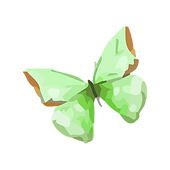School Mermaid (スクール人魚)
- Eve

- Jun 26, 2017
- 11 min read
- Spoilers -
When I was a teenager, I was not at all interested in horror. For the most part, I just did not see the point of jump scares or other spooks. Even something like Sweeney Todd was too dark and unpleasant. I grew up unable to watch The Nightmare Before Christmas. My friends might want to watch Halloween, Friday the 13th, or Nightmare on Elm Street, but I would politely refuse. This aversion led me to miss out on wonderful science fiction classics like Alien and The Thing. The strangest part of all this is that I like dark, creepy things and enjoyed some psychological horror. There was a certain line that I did not want to cross, and even the spooky things I did like were usually stumbled upon rather than purposely discovered. My music choices work much the same way. Such was also the case for School Mermaid (スクール人魚 by Akihito Yoshitomi) and other illustrated horror.
In high school, I spent a lot of time scouring my favorite websites for new manga—graphic novels, Japanese comic books, pick your term—and came across the title "School Mermaid." Around this time I was watching things like Mermaid Melody Pichi Pichi Pitch, which is an anime—short for "animation" and refers to movies and shows in the same vein as Dragon Ball Z—about mermaid princesses going to school, falling in love, defeating evil doers with their beautiful siren voices, and generally living magically. For this reason, I was quite excited to see at title like that of School Mermaid.

(Picture found on Google Images.)
Please know that some websites have pictures pop up when you scroll over the title in the list. They tell you who the author is, how the synopsis starts, and what the cover of the series looks like before you even click on the link to the page. The website I was on at the time in question had no such perks. It was just one big list of names in alphabetical order. Skimming the list, I would click on any name that sounded interesting. Another title that comes to mind when I think of this website is Zetman, which was at the very bottom of the list, and also happens to be something of a horror manga itself.
The point is, I was expecting jewelry, fish tails, and cute drama when I clicked on School Mermaid. Instead, I got a gritty, dark image of two girls standing in a poorly lit hallway holding a knife and a crowbar. They were looking straight at me with black eyes, unsmiling. Behind them, half hidden by shadow, was the looming figure of another girl. The color choices were all eerie, such as greenish shades to the darkness and a glowing red light. Shocked by the ominous image and disappointed by the lack of traditional mermaids, I went back to browsing for titles. That is probably when I was reading Love Monster, which is similar to Mermaid Melody, so I may have also gone back to reading that to cheer myself up.

(Picture found on Google Images.)
However, it was not long before I wandered back to examining School Mermaid. I think I did this maybe three times, and I may have even tried reading a little bit just to get a feel for the artwork in black and white. Unfortunately, there was something about the style that I did not like; the girls' feet looked stiff and their clothes were painfully normal. Still, I wanted to know why they were standing in the school at night wearing work gloves and wielding weapons. Also, the girl in the background appeared to be wearing a swimsuit. Eventually I gave in and read it, the way I had with the Human Centipede page on Wikipedia. Morbid curiosity often gets the best of me. And it was, after all, only three short chapters in total.
School Mermaid ended up leaving a strong impression on me. Not only was I thoroughly creeped out; I wanted to read it again and again to relive its strange, dark narrative. Now, years later, I still love School Mermaid, especially since visiting Japan. I happened to stumble across the School Mermaid book in a bookstore, which contained much more than those first three chapters I had known for years. My Japanese was good enough to get me through these new chapters and I was over the moon for days on end. This complete volume of School Mermaid stories happened to be published that same year, so it was very lucky that is when I happened to be in the land of the rising sun. Somehow it had gained enough popularity for the serialization to continue and a whole book to be put together with a new cover. Not long afterward, I found out that a second volume was scheduled to be published the following year, not long after my departure. Fortunately, I had a friend that I talked into bringing the next volume home for me, since they were coming back to the States later on. I treasure both books to this day.

(Pictures found on Google Images.)
Only recently did I realize what makes School Mermaid so good, and it has taken me a while to put it into words.
Thematically, School Mermaid is a lot like Mermaid Saga by Rumiko Takahashi. Mermaids are associated more with blood and mystery that with beauty. In Takahashi's Mermaid Saga stories, one who consumes the flesh of a mermaid will live forever. These mermaids need human maidens to maintain a youthful appearance, being horrible hag monsters in actuality. In Yoshitomi's School Mermaid, school girls hear a rumor that there are mermaids in the school pool after dark and that eating their flesh will make the boy you like fall in love with you. Each set of chapters follows a few girls on their paths to finding and eating these mermaids in the name of love.

(Picture found on Google Images.)
I will take this moment to say that School Mermaid combines two or more Japanese style trends. The first is the use of rumors or objects that are passed along to carry the story from character to character. The Ring use this tactic by way of a video that is passed around and brings ghosts and misfortune to new watchers. (Curiosity killed the cat, etc.) Many urban legends have been turned into horror films in Japan because this sort of contagious misfortune is very popular. "Vengeful spirits" are definitely a favorite subject. There are other films like The Ring, including Teke Teke, about the ghost of a girl who fell on the train tracks and was cut in half, and now drags herself along the ground at incredible speeds to attack any students who might come to investigate the truth behind the legend. The name comes the sound "teke teke" or "scratch scratch": the sound of her body dragging on the ground. Another is Kuchisake-onna, which is based on an old Japanese ghost story about a woman with a grotesquely cut mouth. The English name is Carved: The Slit-Mouthed Woman and modern version of this ghost story might feature the woman wearing a cold mask in order to look like a normal person. (In Japan people wear surgical masks to cover their mouths and noses when they are sick.) School Mermaid features both a rumor going around a high school and a small notebook that also gets passed around amongst the students. Inside the notebook is information about how to make the mermaids appear.
That brings me to the second trend: high school students. This is a popular age to see in books and media in any country, but Japanese youth have a very specific look due to the uniforms worn by students. Girls often wear sailor style uniforms and boys will wear black button-up uniforms, and they are seen all over the country going to school and hanging out after school. This look is also part of the sexy school girl fetish fantasy that one might stumble across online, while also being stylized by series like Sailor Moon, Pretty Cure, Magic Knight Rayearth, and other magical girl stories. Films like Bounce Kogals point out that these sweet school girls might not be as innocent as they are expected to be, and manga like Short Cuts satirize the popularity of the look and its association with the idealization of girly youth. There are actually many girls in Japan who will buy the uniforms from other schools just so they can wear the cute style out and about in public. In many manga, this look is so acceptable as everyday clothing that readers might hardly see the main characters in anything else. The aforementioned magical girl stories are often like this, and even stories about monsters and time travel like Inu-Yasha fall under this umbrella. Sometimes it is just easier to put characters in a cute schoolgirl outfit than it is to create new outfits for them all the time. It is a symbol of youth, vitality, and innocence.

(Picture found on Google Images.)
School Mermaid is not the first story to play with these associations, but it makes the rare choice of setting the scene in the school itself, where the girls would normally wear their uniforms. At first the girls are seen in their school uniforms, but they quickly change out of them and put on normal outfits with jeans and sneakers. Magical girls like Sailor Moon have cute battle outfits with short skirts and high heeled boots. These girls instead wear practical clothes. This change from school uniform into activity clothes goes hand in hand with the perception shift the reader must undergo. Not only are these girls more than innocent school children, they are young women who are willing to kill mermaids for the sake of love, or at least the girlhood crushes they perceive as true love. They are on the cusp of womanhood with only a general idea of what adulthood means and with little control over their lives, driven by feelings to change their fates. This is made all the more complex by the fact that the mermaids (1) do not live as lovely fish ladies in the pool and (2) are in fact the lost souls of other girls who went hunting for mermaids in the past and failed.
I mentioned before that the dark figure on the first cover looks like she is wearing a swimsuit, and on the cover of the book that is clearly the case. More specifically, the mermaids are wearing school-issued uniform swimsuits. These swimsuits always look exactly the same and each one has a letter on the chest that is the English initial for a girl's family name (e.g. Yoko Tachibana would have a "T" on hers). Subsequently, all the mermaids ("fish people" in Japanese) look identical save for their hair and their letters, which represent a little bit about who they were before they tried hunting mermaids.
The artwork is very interesting for this reason as well; all the girls look very similar, even with different outfits on. Rather than girls with crazy hair styles and colors, School Mermaid features girls who look very normal with jet black hair and eyes that better capture the typical Japanese appearance than most anime. (Refer back to the Mermaid Melody and Sailor Moon pictures with girls who have impossibly long hair and ridiculous hair and eye colors.) Their body types and clothing choices also reflect this. If a girl does look different, it is because she dyed her hair or has a slightly lighter hair color, which is difficult to display in black and white. Readers have to pay more attention to each character, looking for those things that make them unique in less obvious ways than knee-length pigtails. (This is especially true for the mermaids, who are all wearing the same thing.) Essentially, these are everyday school girls. Even their names are ordinary and innocent, usually ending in "Ko" (子, child): Yoshiko, Haruko, Toshiko, Noriko, Mariko... Any seemingly innocent young woman could be capable of hunting and killing mermaids that look like fellow students, or becoming one of the hunted if she fails and becomes trapped in the school as a mermaid. This is where the real horror sets it. While artists like Junji Ito draw their characters in such a way that the viewer feels automatically disturbed, readers are disturbed by the sheer normality of Akihito Yoshitomi's characters.

The main character from Junji Ito's Uzumaki series
(Picture found on Google Images.)
That is not to say that the mermaids themselves are not scary, although most of the horror really comes from the story and background. They are actually a rather mysterious set of monsters. Unless you know a secret chant to recite beside by the school pool, you cannot see the mermaids. Once you recite the chant, you can see the mermaids in the hallways of the school, passing through walls and floors as if they were just water. The catch is that you must eat the flesh of a mermaid before the sun rises or you will become one of them. In some cases the innocent-looking mermaids, who usually smile and frolic, reveal rows of sharp teeth like a deep sea fish and attack the girls who are hunting them. In the course of the two volumes, this happens to three girls: (1) a girl who was in love with her English teacher rather than another student, (2) a girl who was coerced into putting on her school swimsuit to confuse other hunters, and (3) a girl who refused to hunt them and tried to leave the school grounds. (In this last case, it is suggested that the mermaids understand the girl's love because they were once willing to take a risk for the same reason. They end up letting her go, for her love for the boy is strong and pure to the point that she did not hunt them after being tricked into reciting the chant.) There seem to be secret rules that are not included in the notebook that outlines what girls must do to catch mermaids. Otherwise, the mermaids dance around and tease the hunters until daybreak. At that point, girls are killed and eaten, or the mermaids embrace their new sister.

(Picture found on Google Images.)
One of the greatest things about School Mermaid is that it is a female-centric story that even includes some lesbianism. (I say this is great not out of a hatred for men, but simply because it is nice to read something with so many lead female characters. One could argue that this is actually soft core porn for lesbians, what with all the girls in swimsuits dancing around and lounging about on top of each other.) There are very few male characters, despite the fact that they seem to be the girls' reason for hunting the swimsuit clad mermaids. I believe that this reason is a bit of a misconception. It is the crushes the girls have on these boys rather than the boys themselves that drive them to do this. They give no thought to whether or not they are playing with the young man's free will when they cut a mermaid's throat. (Remember that they were once schoolgirls too, in many cases girls the hunters actually went to school with.) In fact, any boy will do, in terms of surviving the night in the school. The girls must first find and catch a mermaid with the letter on her chest that matches the initial of the boy they like, then think his name while eating that mermaid's flesh. Time and time again, it is revealed that the person whose name you think about does not have to be the boy you personally like, or even a boy! In one chapter, two girls think each other's names and become a couple. In another, a girl reveals that she has failed to catch the right letter many times, but always manages to catch a different mermaid and date another classmate until she can try again, going so far as to trick a classmate with the right initial into coming along and becoming a mermaid for her to hunt. The boys are generally plot devices, or are being manipulated emotionally by the girls without realizing it at all. (The only real exception is in the case of the girl who refused to hunt the mermaids.) Most of these boys are never seen at all! Only their names and initials are important. (We also discover that you don't have to think of anyone for the mermaid flesh to work. So long as you eat some, you will not turn into a mermaid.) The relationships, of all kinds, between the girls are more interesting and important than their relationships with the boys in almost every story.

(Picture found on Google Images.)
School Mermaid is one of the most prized series in my manga collection, not only because it is good and an early favorite but also because I rediscovered it so many times as I grew from a teenager into a young adult, then into a self-responsible adult. It started the slow process of opening me up to new genres, especially horror, and is one story that I love to reread just for the nostalgia. I have translated it for a class project, which I am still proud of even after it was translated online. Now, volume three has been released, and it is currently headed for my house from Japan. Perhaps the new chapters and characters will provide the greatest revelations of all.

(Picture found on Google Images.)





























Comments